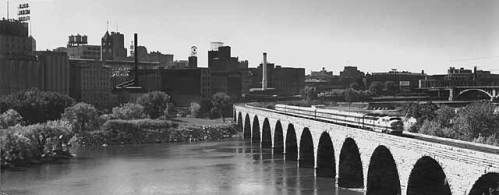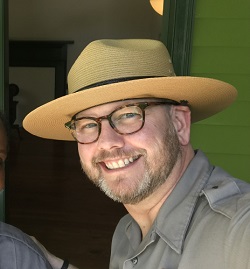2021 Minnesota Fall Color Report and Travel Ideas
 Thursday, September 9, 2021 at 12:07PM |
Thursday, September 9, 2021 at 12:07PM |  Kim Eslinger |
Kim Eslinger | Via a September 9 e-announcement from Explore Minnesota:

Explore Minnesota and Minnesota State Parks and Trails start weekly foliage reports today
To mark the arrival of autumn, Explore Minnesota, the state's tourism office, and Minnesota State Parks and Trails will begin their weekly fall color reporting starting today. From scenic drives to hiking and biking trails, apple orchards, seasonal festivals, flavors and more, Explore Minnesota and Minnesota State Parks and Trails offer weekly color reports and trip-planning tips to encourage travelers to get outside and enjoy the state this season.
 Minnesota's fall foliage season typically progresses from north to south from mid-September through mid-October, but according to Minnesota State Parks and Trails, 2021 color activity and peak timeframes are more unpredictable this year due to statewide drought conditions.
Minnesota's fall foliage season typically progresses from north to south from mid-September through mid-October, but according to Minnesota State Parks and Trails, 2021 color activity and peak timeframes are more unpredictable this year due to statewide drought conditions.
To subscribe to weekly email updates on fall color, including the state's popular fall color finder, visit exploreminnesota.com/fallcolor (888-VISITMN) or mndnr.gov/fallcolor (888-646-6367). The season is short and sweet, and Explore Minnesota is sharing some ideas to make the most of it this year.
Take a Road Trip
From Lake of the Woods to the bluffs of the Mississippi River Valley, Minnesota makes a great road trip destination. The state's scenic drives meander through diverse landscapes: the lake-splashed north woods, grand bluffs towering above winding rivers, ribbons of prairie, and many parks and trails along the way. Take a road trip on one of the state's rainbow routes. Road trippers can play car bingo along the way by downloading a free card at exploreminnesota.com/bingo.
Explore the Trails
Explore Minnesota's Hike MN initiative encourages residents and travelers to be active by trying a new hiking route. Each year, Hike MN highlights 10 of the state's lesser-known trails with varied terrain, lengths, and includes a sweepstakes. Enter by Oct. 26 for a chance to win Minnesota getaways and gift cards for Minnesota State Parks and Trails, Mall of America and Scheels.
Minnesota has one of the nation's greatest state park and trail systems, including 75 state parks and recreation areas, and is home to Voyageurs National Park. Minnesota also is considered one of the country's top states for biking, with 4,000 miles of trails. Some of the longest paved trails include the Root River, Central Lakes, Lake Wobegon, Heartland, Paul Bunyan and Mesabi. The Minneapolis-St. Paul area offers an abundance of award-winning urban parks, trails and lakes, too.
Find a Fall Festival
Pumpkin weigh-offs, scarecrow contests, craft fairs, hayrides and fall flavors are some of the many ways Minnesota celebrates harvest season. Explore Minnesota's event database highlights hundreds of seasonal festivities this fall.
Savor Fall Flavors
Minnesota's fall harvest promises delicious food, but also tasty things to drink. The state's craft beverage scene flourishes, and fall is the perfect time to sample the flavors. Breweries create special Oktoberfest, pumpkin and other seasonal varieties, available in taprooms or growlers to go. Wineries celebrate with grape stomps and tasting events, and distilleries serve up local spirits. Visit the Land of 10,000 Drinks map to plan a "brewcation."
Pumpkin Patches, Orchards and Mazes
Minnesota Grown lists around 140 pumpkin patches in every nook and cranny of the state, some of which have rides, corn mazes, and enough activities to fill a whole day. Home to the Honeycrisp, Minnesota is one of the best places to get apples ripe for the picking at orchards throughout the state. And thanks to an extensive, statewide bicycle trail network, it's easy to plan a pedal-powered orchard adventure in Minnesota.
See the State's Spooky Side
From kid-friendly to frightening, Halloween celebrations of all types can be found in Minnesota. Anoka, the self-proclaimed Halloween Capital of the World, celebrates the entire month of October. Other options include Valleyscare in Shakopee and the Jack-O-Lantern Spectacular at the Minnesota Zoo in Apple Valley. Discover Minnesota's mystical side with this statewide guide to haunted happenings.
"Fall color timing may be unpredictable this year, but the season always happens fast, and the main thing is getting out to discover new sights across the state. Hopefully Mother Nature delivers mild weather with pleasant pops of color. From lesser-known hiking and biking trails to beautiful drives, charming towns, family-friendly festivities and weekly reports, Explore Minnesota has endless trip-planning resources," said Explore Minnesota interim tourism director, Leann Kispert.
Know Before You Go
Many scenic routes, parks and trails across the state are popular in the fall, and travelers should consider midweek trips and lesser-known options to avoid crowds. Due to the current COVID-19 and Delta variant situation, check official event or attraction websites for potential alterations. Prior to making travel plans, visit Explore Minnesota's COVID-19 Information page.
Burning restrictions across central and northern Minnesota continue to cover several counties. Travelers should be aware of local restrictions by visiting the Minnesota Department of Natural Resources wildfire information hub for details.
"It continues to be an unusual time for Minnesota's tourism industry, and businesses across the state appreciate visitor support and patience," added Kispert.
Share the Season on Social
Tag fall photos and tune into social media to get real-time inspiration using Explore Minnesota's popular statewide travel hashtag #OnlyinMN and Minnesota State Parks and Trails' hashtag #JustAddNature.










































